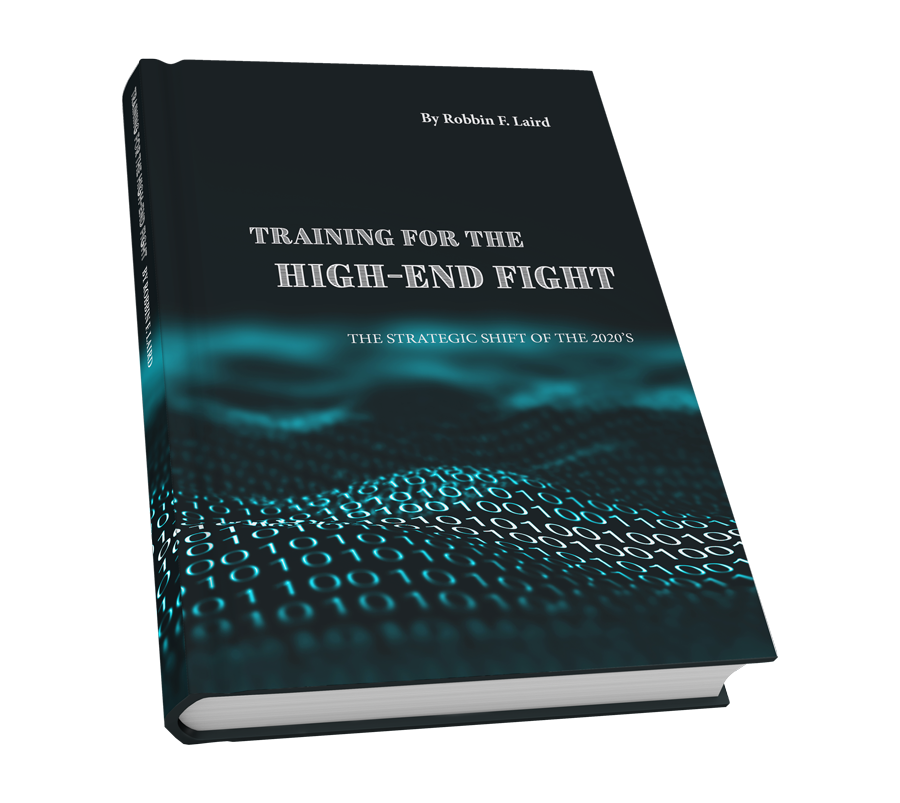“Training for the High-End Fight” highlights the essential strategic shift for the US and allied militaries from land wars in the Middle East to the return of great power competition. The primary challenge of this strategic shift will be the need to operate a full spectrum crisis management force. That means training a force capable of delivering the desired combat and crisis management effect in dealing with 21st century authoritarian powers.
As Admiral Nimitz confronted the last century’s challenges in the Pacific, he concluded a core lesson for this century’s Pacific warriors: “Having confronted the Imperial Japanese Navy’s skill, energy, persistence, and courage, Nimitz identified the key to victory: ‘training, TRAINING and M-O-R-E T-R-A-I-N-I-N-G.’
The U.S. and its core allies are shaping new capabilities to deal with the various threats and challenges affecting XXIst Century global theaters. Flexibility in operations and agility in inserting force with a proper calibration of effect will be enhanced as new systems come online in the years ahead.
But these systems will have the proper effect only in the hands of skilled warriors, who, today, have to face a radical disjuncture from traditional training approaches and thinking in order to address these new types of threats and work towards a seamless common operating picture.
This book looks at the further adaptation and evolution of the U.S. forces in preparing for conflict in a contested environment, variously referred to as the return of Great Power Competition, peer conflict, or the high-end fight. The book is built around what was learned from a number of visits and discussions at warfighting centers in the United States during visits over the past few years, with the bulk of the interviews included in the book coming from visits in 2020. These visits have been to Norfolk, Virginia; Jacksonville and Mayport, Florida; San Diego, California; and Las Vegas and Reno, Nevada.
The book starts by providing a brief overview on the strategic shift and the crafting of the integrated distributed force to be able to deliver effective outcomes for our political leaders.
The book then turns to the two key enablers of the integrated distributed force, namely, C2 and Intelligence, surveillance, and reconnaissance (ISR), and with these terms being redefined in many ways in terms of how the force is evolving them, leveraging them, and transforming them.
The setting is then in place to discuss what it means to train for the high-end fight. To train for and execute the capabilities of the high-end fight requires that training and exercises be well funded, and the innovations being generated by the warfighting centers drive force structure development.
The force that is evolving is a very capable one, but the reset in its combat approaches and combat architecture is crucial to enhancing its capabilities to provide for the skill necessary to master the puzzles and challenges of escalation management and to shape the skills needed for the world we are now in.
This reset in combat approach is pivotal to enhancing our escalation management skills and for protecting the liberal democracies against 21st century authoritarian powers. Informed by interviews with officers at a number of U.S. war fighting training centers, readers will discover the future of 21st Century combat, and how our forces are preparing for it.
In his review of the book, this is what Air Marshal (Retired) Geoff Brown, RAAF, had to say:
For the last 20 years high-end training has continued to be a feature of major USN/USMC and USAF exercises.
However the emphasis and the training has always been modified to take account of the operations in Afghanistan and Iraq.
While this was a necessary requirement of the times, it did lead to a stagnation in high-end warfighting concepts as the exercises and training have remained largely unchanged for the last 20 years.
The proliferation of 5th generation technology and the threat posed and encompassed in the cyber and EW domains has continued to evolve rapidly to the point that the latest generation SAMs are not necessarily or even the most significant threats posed to the deployment of Allied Air Power.
The emphasis on operations in the Middle East has meant that the high-end exercises have not evolved as quickly as the technology or the threat.
While the U.S. has continued to develop and deploy leading edge technology for the high-end fight, the training concepts and virtual environments have not necessarily kept pace with the requirements of this new technology.
High quality and realistic training has always been and will continue to be the major determinant in military success.
Training for the High-End Fight is the only recent significant work that looks in detail at this issue.
Robbin Laird uses his significant research over the last seven years and his unprecedented access to USN, USAF and USMC senior warfighters to detail the major shift in thinking that is underway as the U.S. works through the training requirements of Allied Air Power when all the domains are contested by a capable adversary.





